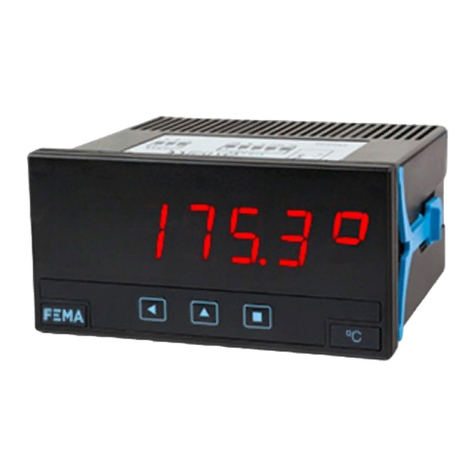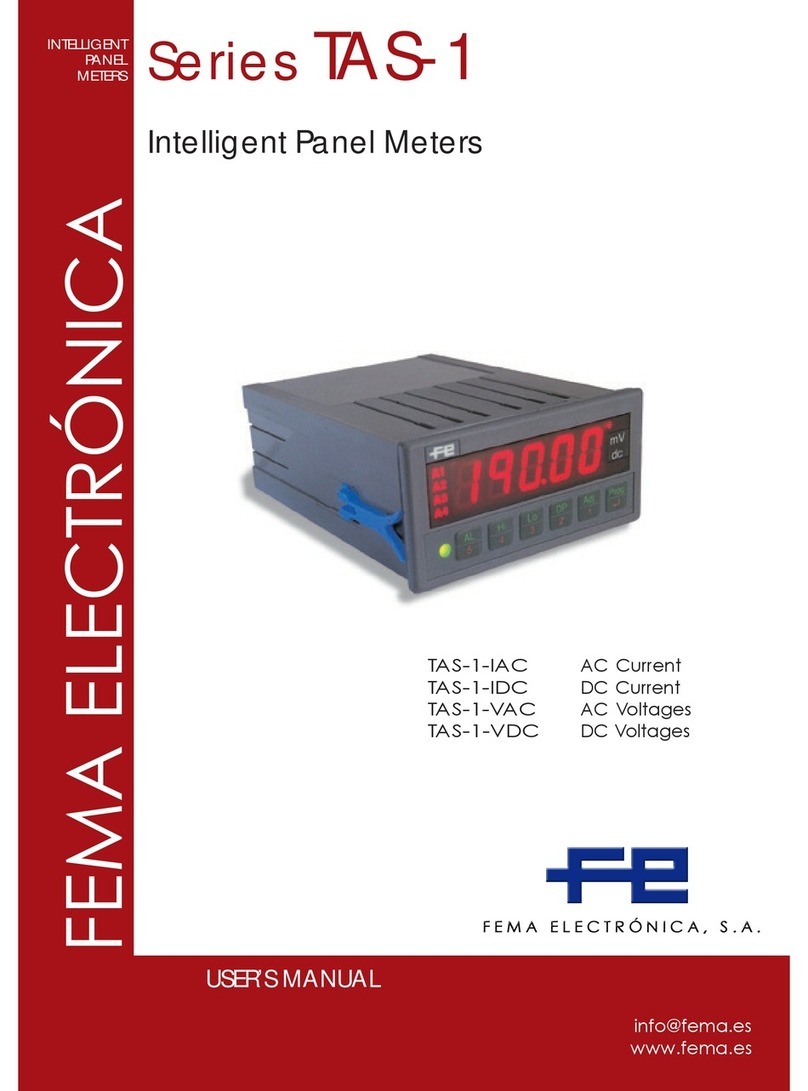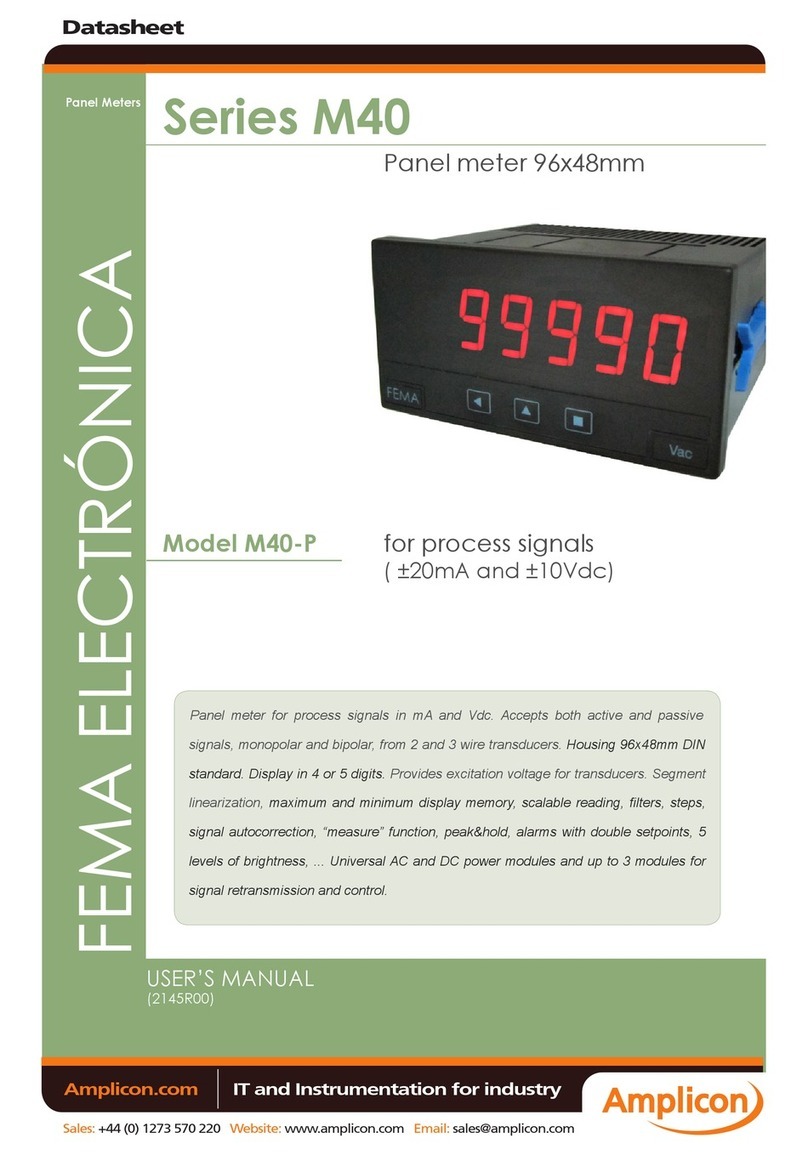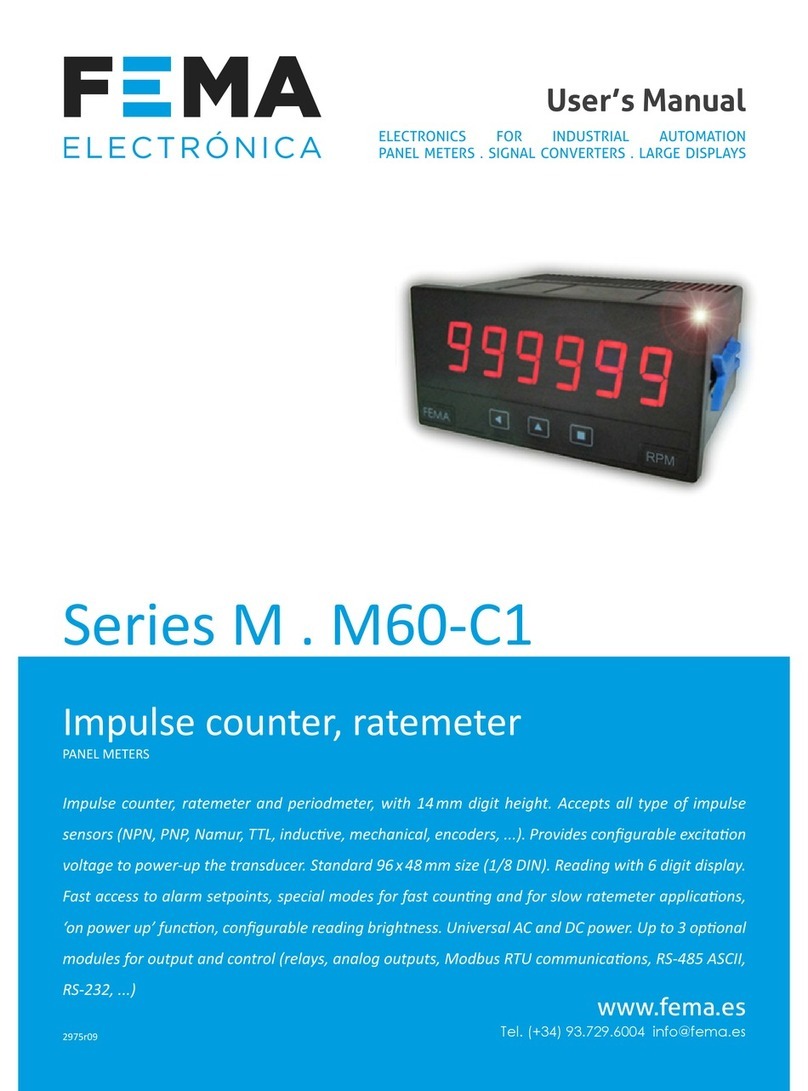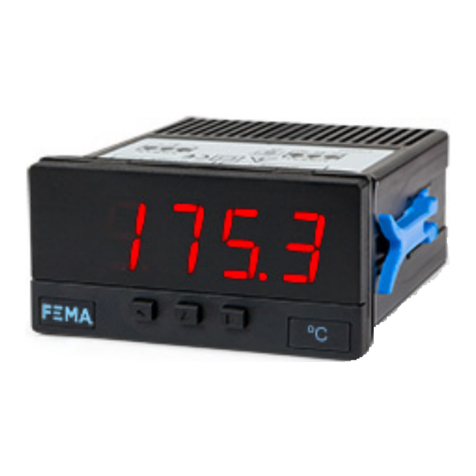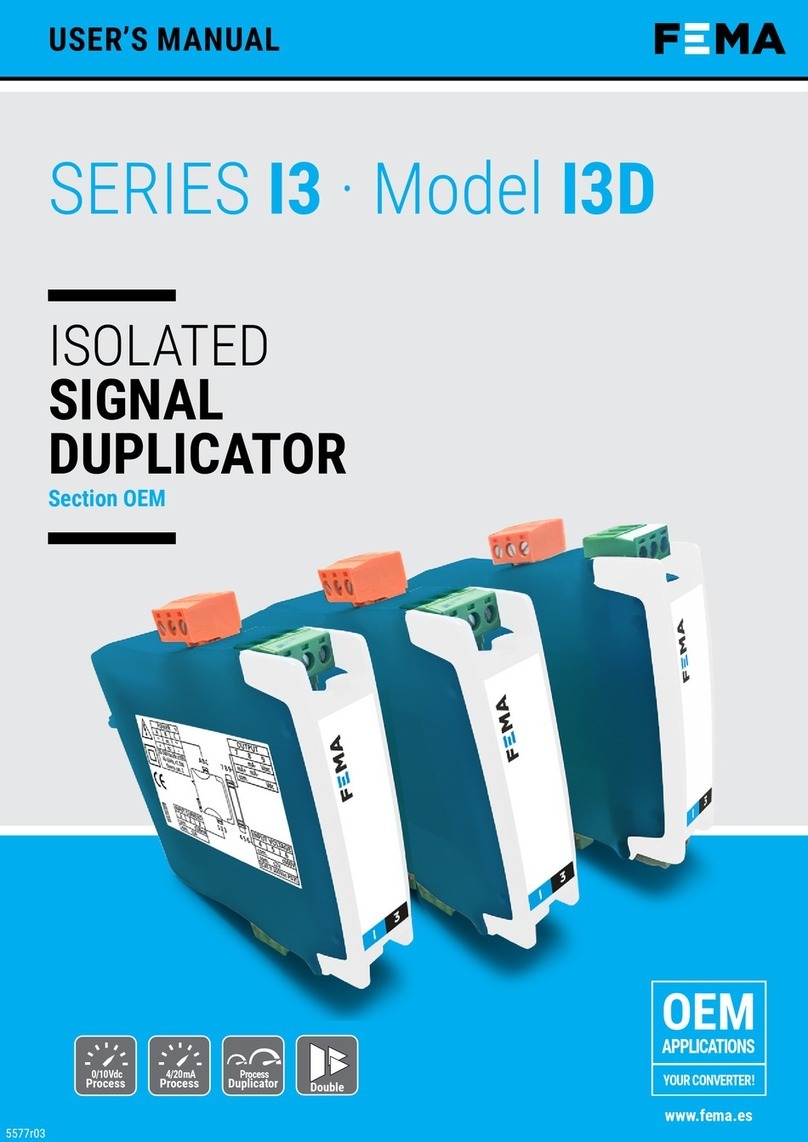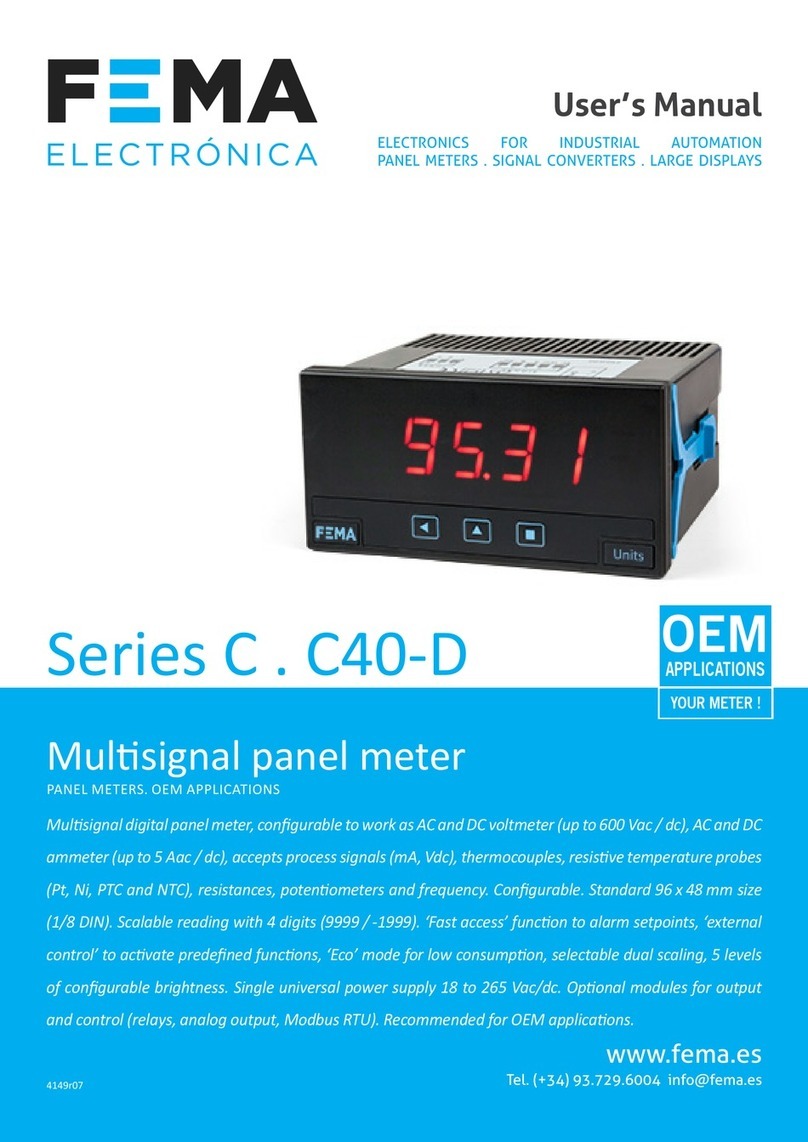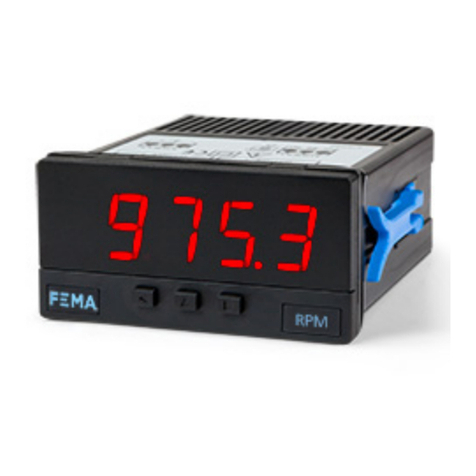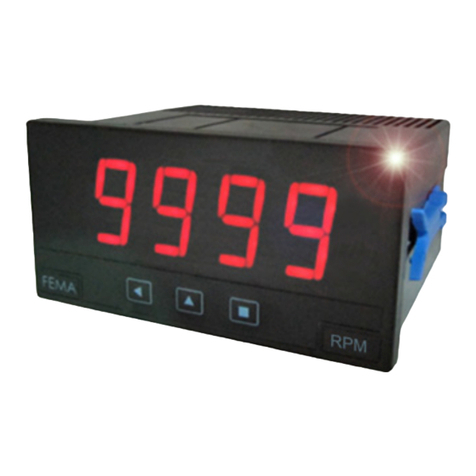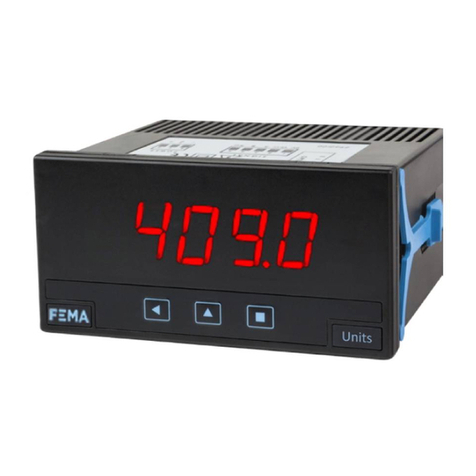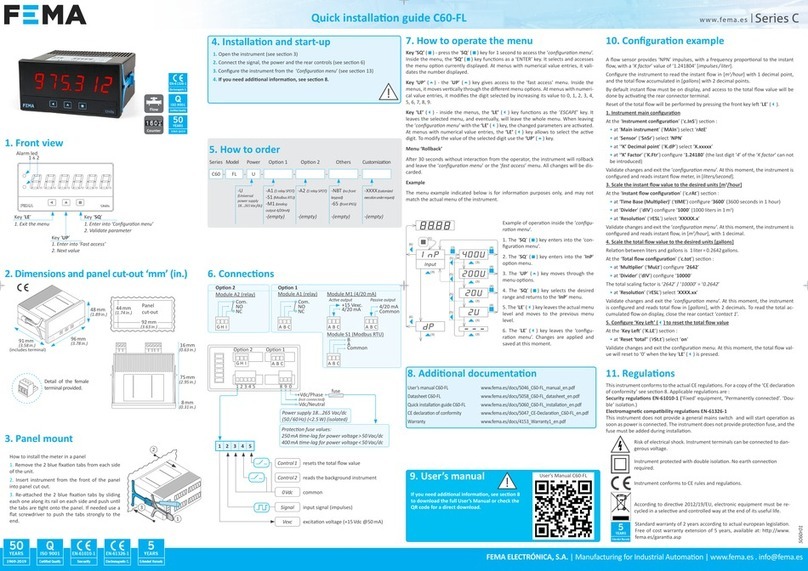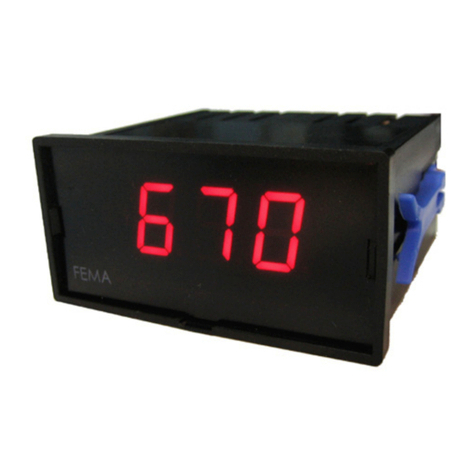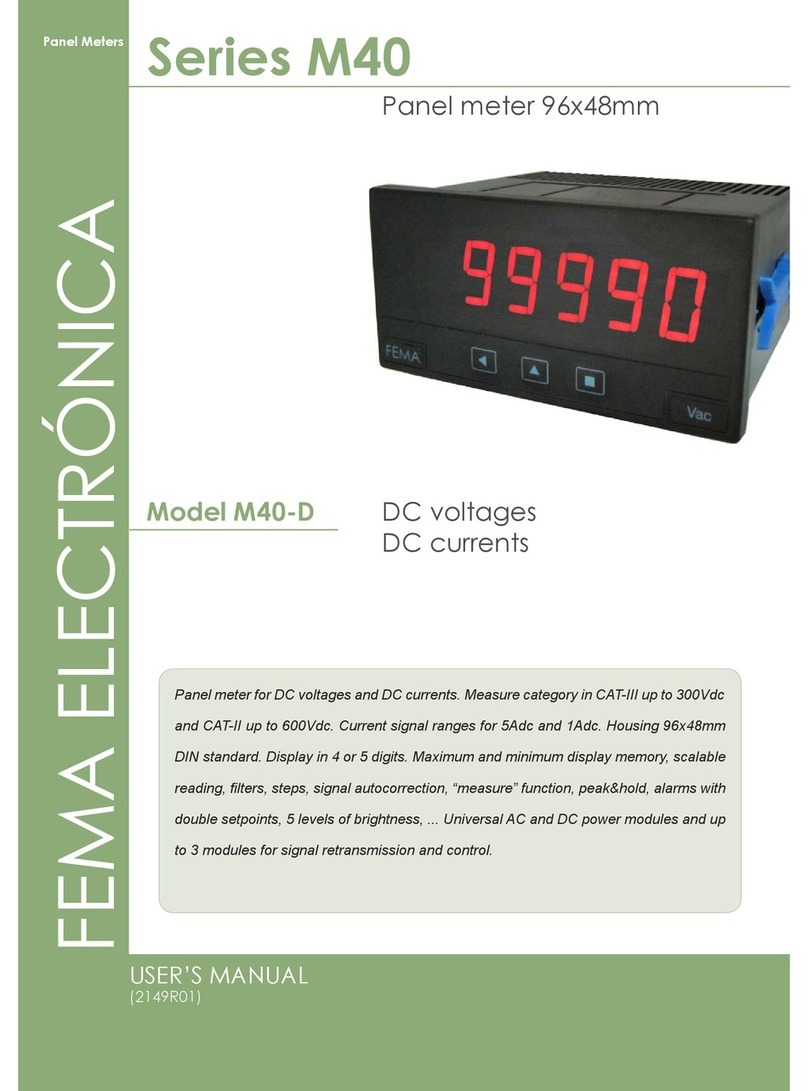
FEMA ELECTRÓNICA . SERIES M . M60-LC
10
1.12.2 Inial set-up
Before starng to congure the instrument, idenfy the pa-
rameters of the load cell, at the manufacturers datasheet (see
Table 5). If the parameters are not know, leave the instrument
with the default values.
Load cell
parameters
Default values
Sensivity 2 mV/V
Nominal weight 1000 Kilos
Excitaon voltage 10 Vdc
Table 5 - Parameters of the load cell
For an accurate measure, the instrument needs to correctly
congure its parameters for the parcular load cell connect-
ed. The conguraon procedure has a rst theorecal step
and a second empirical step. The third and nal step will set
the ‘system zero’ of the instrument.
Theorecal conguraon of the load cell
The theorecal parameters are congured at the ‘Parameters
of the cell’ (‘cELL’) menu.
• at the ‘Decimal point’ (‘dP’) parameter, place the decimal
point according to the resoluon you want to see.
• at the ‘Nominal weight’ (‘LoAd’) parameter introduce the
nominal weight of the load cell. The value is entered with the
resoluon congured in the parameter above.
• at the ‘Sensivity’ (‘MV.V’) parameter, introduce the value
of the cell sensivity.
• at the ‘Excitaon voltage’ (‘V.EXc’) parameter, select 5 or
10 Vdc. (The ‘LAb’ value enables the laboratory mode, for di-
rect measure from a millivolt generator instead of a load cell
(see secon 1.16.5)).
Example : load cell with 1.95 mV/V sensivity and a nominal
value of 5 Kg and power 5 Vdc. To read in grams with a deci-
mal point, congure the theorecal parameters as indicated
below :
Decimal point : XXXXX.X
Sensivity : 1.95 mV/V
Nominal weight : 5000.0
Excitaon voltage : 5 Vdc
When the theorecal values are congured, leave the cong-
uraon menu. Apply a ‘system zero’. Force a tare, and place
dierent weights to check if the reading is correct. If it is not
correct, apply the empirical conguraon and again the ‘sys-
tem zero’.
Empirical conguraon of the load cell
The second part of the load cell conguraon is an empiri-
cal process of eld correcon. The instrument will detect and
correct the individual deviaons of this parcular load cell.
For the empirical conguraon you will need access to two
weights : a low weight, as small as possible (it can be the cell
without weight) and a high weight as close as possible to the
nominal weight of the cell.
In each case the meter will be informed of the real weight
applied to the cell in order to correct and compensate for the
measured deviaons at the signal. Both correcons are need
(high and low) for a correct conguraon of the load cell.
• low weight correcon : place the load cell without weight
or with the smallest weight possible, and access the ‘Low
weight correcon’ (‘F.Lo’) menu. Press key SQ (‘<’), intro-
duce the value of the weight and press again SQ (‘<’). The
instrument will ash shortly and return to the menu entry
‘Low weight correcon’ (‘F.Lo’).
• high weight correcon : place the load cell with a weight
closest to nominal and access the ‘High weight correcon’
(‘F.hI’) menu. Press key SQ (‘<’), introduce the value of the
weight and press again SQ (‘<’). The instrument will ash
shortly and return to the menu entry ‘High weight correc-
on’ (‘F.hI’).
Once both correcons are applied, leave the conguraon
menu. Force a tare, and place dierent weights to check that
the reading is correct. As a last step, assign the ‘system zero’ if
you want to access gross weight and net values.
Assign the ‘system zero’
This is a necessary and important step for a correct measure-
ment with a load cell.
• assign the ‘system zero’ : place the load cell without weight
or with the weight that will be considered as ‘zero’ and access
the ‘System zero’ (‘S.ZEr’) parameter. Press key SQ (‘<’). The
instrument will ash shortly and return to the menu entry
‘System zero’ (‘S.ZEr’).
The empirical conguraon of the load cell recalcu-
lates and updates the theorecal sensivity value
(‘Sensivity mV/V’ (‘M V.V’) parameter). Manual
modicaons of this parameter will modify the congura-
on of the cell. To prevent accidental modicaon con-
sider the acvaon of the ‘password’ funcon (see secon
1.12.17).
!
Once the load cell has been correctly congured,
and the reading of the instrument is correct, it is not
necessary to access again this part of the congura-
on menu. If you need to scale the reading to dierent units,
use the ‘Scale factor’ (‘ScL.F) parameters at the ‘Advanced
conguraon’ menu (see secon 1.12.7).
!












